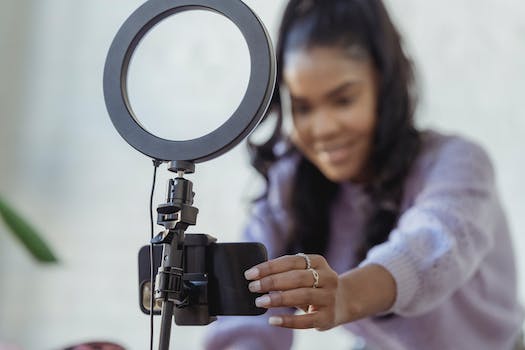

-
Table of Contents
"Unlock the power of your voice with our comprehensive podcast setup guide."
Introduction
Setting up a podcast can be an exciting and rewarding endeavor. However, it can also feel overwhelming if you're unsure where to start. That's why having a step-by-step guide can be incredibly helpful. In this article, we will provide you with a comprehensive and easy-to-follow guide on how to set up your podcast. From choosing a topic and format to selecting the right equipment and software, we will walk you through each stage of the process. Whether you're a beginner or have some experience in podcasting, this guide will equip you with the knowledge and tools you need to successfully launch your own podcast. So, let's dive in and get started on your podcasting journey!
Choosing the Right Equipment for Your Podcast Setup
A Step-by-Step Guide to Setting Up Your Podcast
Choosing the Right Equipment for Your Podcast Setup
When it comes to setting up your podcast, choosing the right equipment is crucial. The quality of your audio can make or break your podcast, so it's important to invest in the right tools. In this section, we will guide you through the process of selecting the best equipment for your podcast setup.
First and foremost, you will need a good quality microphone. This is the most important piece of equipment for any podcaster. There are many options available, ranging from USB microphones to XLR microphones. USB microphones are a popular choice for beginners as they are easy to set up and use. However, if you are serious about podcasting and want to achieve professional sound quality, an XLR microphone is the way to go. XLR microphones require an audio interface to connect to your computer, but they offer better sound reproduction and more control over your audio.
Next, you will need headphones. While any pair of headphones will do, it's recommended to invest in a good quality set. Closed-back headphones are ideal for podcasting as they provide better isolation from external noise. This will help you monitor your audio more accurately and ensure that you are capturing the best sound possible.
To record your podcast, you will need recording software. There are many options available, both free and paid. Audacity is a popular choice for beginners as it is free and easy to use. It offers basic editing features and allows you to export your audio in various formats. If you are looking for more advanced features, Adobe Audition and GarageBand are great options. These software programs offer a wide range of editing tools and effects to enhance your audio.
In addition to recording software, you may also need a digital audio workstation (DAW). A DAW is a more advanced software program that allows you to record, edit, and mix your podcast. It offers more control over your audio and allows you to create a professional-sounding podcast. Some popular DAWs include Pro Tools, Logic Pro, and Ableton Live. However, keep in mind that DAWs can be complex and may require a learning curve if you are new to podcasting.
To ensure that your audio is clear and free from background noise, you may also want to consider investing in a pop filter and a microphone stand. A pop filter helps reduce plosive sounds (such as "p" and "b" sounds) that can distort your audio. A microphone stand, on the other hand, allows you to position your microphone at the optimal distance and angle for recording.
Lastly, don't forget about your recording environment. Find a quiet space where you can record without interruptions or background noise. Consider using soundproofing materials or blankets to minimize echo and reverberation. It's also a good idea to invest in a good quality audio interface if you are using an XLR microphone. This will ensure that your audio is properly amplified and converted into a digital format.
In conclusion, choosing the right equipment for your podcast setup is essential for producing high-quality audio. Invest in a good quality microphone, headphones, and recording software to ensure that your podcast sounds professional. Consider additional accessories such as a pop filter and microphone stand to further enhance your audio. Lastly, create a quiet and well-treated recording environment to minimize background noise and echo. With the right equipment and setup, you'll be well on your way to creating a successful podcast.
Planning and Structuring Your Podcast Episodes

A Step-by-Step Guide to Setting Up Your Podcast
Planning and Structuring Your Podcast Episodes
When it comes to setting up your podcast, planning and structuring your episodes is a crucial step. This is where you lay the foundation for your show and ensure that each episode flows smoothly and engages your audience. In this section, we will guide you through the process of planning and structuring your podcast episodes, step by step.
The first step in planning your podcast episodes is to define your target audience. Who are you creating this podcast for? Understanding your audience will help you tailor your content to their interests and needs. Conduct market research, analyze your competitors, and gather feedback from potential listeners to gain insights into what topics and formats resonate with your target audience.
Once you have a clear understanding of your target audience, it's time to brainstorm episode ideas. Start by creating a list of topics that align with your podcast's theme and your audience's interests. Consider what unique perspective or expertise you can bring to each topic. Aim for a mix of evergreen content that remains relevant over time and timely topics that address current trends or events.
With your list of episode ideas in hand, it's time to create an episode outline. This outline will serve as a roadmap for each episode, ensuring that you cover all the essential points and maintain a logical flow. Begin by introducing the topic and providing a brief overview. Then, break down the main points or subtopics you want to cover, ensuring that each point flows smoothly into the next.
Transitional phrases are essential for guiding your audience through your podcast episodes. Use phrases like "moving on," "now let's discuss," or "next, we'll explore" to signal a shift in topic or subtopic. These phrases help maintain a cohesive structure and prevent your episodes from feeling disjointed.
In addition to the main points, consider incorporating storytelling elements into your episode outline. Stories are powerful tools for engaging your audience and making your content more relatable. Whether it's a personal anecdote, a case study, or a guest interview, weaving stories into your episodes adds depth and keeps your listeners hooked.
Once you have your episode outline ready, it's time to think about the length of your episodes. While there is no one-size-fits-all answer, aim for a duration that aligns with your target audience's preferences and the nature of your content. Some podcasts thrive with shorter, bite-sized episodes, while others benefit from longer, in-depth discussions. Experiment and gather feedback to find the sweet spot for your show.
Now that you have a solid plan for your podcast episodes, it's time to think about the overall structure of your show. Consider whether you want to follow a consistent format for each episode or if you prefer a more flexible approach. A consistent format can help establish familiarity and build a loyal audience, while a flexible approach allows for more creativity and adaptability.
Finally, don't forget to create a schedule for releasing your episodes. Consistency is key when it comes to podcasting. Decide on a frequency that works for you, whether it's weekly, bi-weekly, or monthly, and stick to it. This helps build anticipation among your audience and ensures that they know when to expect new episodes.
In conclusion, planning and structuring your podcast episodes is a crucial step in setting up your podcast. Define your target audience, brainstorm episode ideas, create an episode outline, incorporate transitional phrases, and consider the length and overall structure of your show. With a well-planned and structured podcast, you'll be on your way to engaging and captivating your audience.
Promoting and Growing Your Podcast Audience
Promoting and growing your podcast audience is a crucial step in building a successful podcast. After all, what good is a podcast if no one is listening? In this section, we will provide you with a step-by-step guide on how to effectively promote and grow your podcast audience.
The first step in promoting your podcast is to create a compelling and eye-catching cover art. Your cover art is the first thing potential listeners will see, so it's important to make a good impression. Use high-quality images and bold, easy-to-read text that accurately represents the content of your podcast.
Next, you'll want to optimize your podcast for search engines. This means using relevant keywords in your podcast title, description, and episode titles. By doing so, you increase the chances of your podcast appearing in search results when people are looking for content similar to yours.
Once your podcast is optimized, it's time to submit it to podcast directories. These directories, such as Apple Podcasts, Spotify, and Google Podcasts, are where people go to discover new podcasts. By submitting your podcast to these directories, you increase its visibility and reach a wider audience.
In addition to submitting your podcast to directories, it's important to promote it on social media. Create accounts for your podcast on platforms like Facebook, Twitter, and Instagram, and regularly post updates, episode releases, and behind-the-scenes content. Engage with your audience by responding to comments and messages, and encourage them to share your podcast with their friends and followers.
Another effective way to promote your podcast is by guesting on other podcasts. Reach out to podcast hosts in your niche and offer to be a guest on their show. This not only exposes your podcast to a new audience but also establishes you as an expert in your field.
To further grow your podcast audience, consider collaborating with other content creators. This could involve hosting joint episodes, cross-promoting each other's podcasts, or even creating a podcast network. By collaborating with others, you tap into their audience and gain exposure to new listeners.
In addition to collaborations, consider running contests or giveaways to incentivize people to listen to your podcast. Offer exclusive content, merchandise, or even the chance to be a guest on your show. Contests and giveaways not only generate excitement and engagement but also encourage listeners to share your podcast with others.
Lastly, don't forget the power of word-of-mouth marketing. Encourage your existing listeners to recommend your podcast to their friends and family. Offer referral incentives, such as bonus episodes or exclusive content, to those who successfully refer new listeners. Word-of-mouth recommendations are often the most effective way to grow your podcast audience.
In conclusion, promoting and growing your podcast audience requires a strategic approach. From creating compelling cover art to optimizing your podcast for search engines, submitting it to directories, and leveraging social media, there are various steps you can take to increase your podcast's visibility. Additionally, collaborations, contests, and word-of-mouth marketing can further expand your audience. By following this step-by-step guide, you'll be well on your way to building a loyal and engaged podcast audience.
Q&A
1. What is "A Step-by-Step Guide to Setting Up Your Podcast"?
It is a guide that provides detailed instructions on how to start and set up a podcast.
2. Who is the target audience for this guide?
The target audience is individuals who are interested in starting their own podcast and need guidance on the setup process.
3. What does the guide cover?
The guide covers various aspects of podcast setup, including choosing a topic, selecting equipment, recording and editing, hosting platforms, and promoting the podcast.
Conclusion
In conclusion, "A Step-by-Step Guide to Setting Up Your Podcast" provides a comprehensive and detailed approach to help individuals establish their own podcast. The guide covers various aspects such as planning, equipment selection, recording and editing, hosting platforms, and promoting the podcast. By following the step-by-step instructions provided, aspiring podcasters can confidently navigate the process and successfully launch their own podcast.












